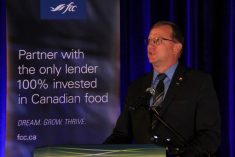The Saskatchewan government is spending $500,000 in a one-year pilot program to help its rural municipalities get rid of problem beavers and beaver dams.
The program, to be administered by the Saskatchewan Association of Rural Municipalities (SARM), will target areas where beaver dams have swamped rural infrastructure, farmland and other private property.
The pilot program comes in the wake of a “substantial increase” in beaver damage province-wide, due to both excess moisture and decreased trapping, Agriculture Minister Bob Bjornerud said in a March 9 release.
Read Also

Manitoba boosts stake in cereals centre to $23.5 million
Premier Wab Kinew said the additional project funds will help ‘Trump-proof’ the provincial economy.
Thanks mainly to lower pelt prices, the number of beaver pelts taken by licensed trappers in Saskatchewan has dropped from 28,500 in 2000 to 11,250 in 2010, the province said.
The province in November pledged to expand the federal/ provincial wildlife damage program to compensate farmers for damage to crops and forage caused by beavers and their dams.
Starting this spring, the compensat ion program would expand to compensate crop and forage growers for damage caused by any wild animal – beavers and blackbirds included.
Saskatchewan Crop Insurance Corp. administers that compensation program, for which no premiums are required and eligible farmers don’t have to be crop insurance customers.
OTHER PESTS
Bjornerud also pledged an extra $150,000 for SARM’s rat control programming, for a total of $750,000 in 2011-12, to help producers and RMs deal with rat populations.
The province will again also provide $50,000 to SARM to administer the wild boar control program in 2011-12 and will also continue funding control of gophers in 2011-12.
That includes the Gopher Control Rebate Program, under which producers and RMs can get a 50 per cent rebate on eligible gopher control products.
Farmers and RMs will still also be able to get two per cent liquid strychnine in 2011 to help control gophers, the government noted.
Health Canada’s Pest Management Regulatory Agency (PMRA) just recently approved Saskatchewan’s application to extend the emergency registration of the strychnine product for this year, the province said Wednesday.















